Business is hurting, and so are we.
Reading time: 9 minutes.
How can we change something we refuse to see for what it really is?
Hurt people hurt people — and so do their organisations.
~
Many of us heard the expression "hurt people hurt people". It tends to be used in the context of interpersonal relationships – to suggest that when someone's emotions exceed the moment they are likely hurting inside, often due to a past event. And when someone is hurting, holding grudges, anger or unprocessed pain, they tend to hurt those around them.
What I love about this is that it seems to be universal. Sure, some cultures might have mechanisms to limit this behaviour or navigate it differently – but generally speaking, if you tried to tell me you never (both) experienced and caused pain because of this, I wouldn't believe you.
And the interesting thing about universal concepts is that they often open back doors and new perspectives about the kind of topics that agitate our times.
Like: business, and its effects on people and the planet.
~
As I mentioned in my last TEDx, we can trace back every social and environmental challenge to one or another abuse of power: on nature, on each other or on ourselves.
What we call "challenges" are actually the consequences of (some of) our ways of doing business – or finance, politics, etc.
And I say "some of" because in the change-making sector you often find the terms "business" and "finance" used as if they are inherently damaging sectors – and I don't believe that's true.
From my perspective, what they're referring to when they say "business" is the specific mainstream, profit-first and at-all-costs, scheming-oriented, de-humanising way of doing business.
That, to me, is a mindset more than a sector – which we actually find applied in corporations and financial institutions as much as in politics, NGOs, non-profits, and more.
So yes – that business way of doing things is damaging people and the planet. In a way, we can say it's hurting them.
Therefore – going back to hurt people hurt people: could we say that business is hurting (everything) because its people are?
I first came across this perspective long before I could remotely consider it useful. Not for lack of acumen, but because I was 10 years old.
My mother, an end-of-life nurse, psychomotrician and activist at heart, spent most of my childhood making sure to expose my sisters and I to content and stories able to open our minds and hearts, and safeguard them from the culture of separation that was already growing strong in Italy. One of these stories was Kirikou and the Sorceress – Kirikù e la Strega Karabà for the fellow italians here.
I used to call movies like this “the weird stuff that mum wants us to watch and no one else cares about" – because at the time my struggle with belonging with my peers was more evident than the importance of learning about certain things.
Turns out the bet she took on me in spite of my resistance did end up bearing fruits. To say my gratitude is delayed is an understatement.
Because what you see in Kirikou and the Sorceress is powerful. And you can't un-see it.
Kirikou and the Sorceress is a French animated film directed by Michel Ocelot and released in 1998. The story is set in a West African village that is under the curse of a powerful sorceress, Karaba, who has turned all the men of the village into statues and made life extremely difficult for the villagers. She is feared and reviled due to her use of magic to hurt people and control the village.
The protagonist of the story is a small boy named Kirikou. Born in an extraordinary way (he can speak and walk immediately after birth), unlike others in the village he's not afraid of Karaba. He believes that she must have a reason for her cruelty and is determined to discover it.
So Kirikou embarks on a journey to confront the sorceress and, at some point of the story, he travels into a forbidden mountain to ask his wise old grandfather about the sorceress Karaba.
His grandfather tells him that she is evil because she suffers from a poisoned thorn in her back, which causes her great pain and also gives her great power.
After learning that Karaba's malevolence stems from a physical torment, Kirikou goes back, tricks her outside of her refuge and extracts the poisoned thorn. Karaba, relieved of her suffering, reverts back to her true, kind self, and the spell on the village men is broken. The movie ends with everyone celebrating together, and life flourishing again.
So, long before Disney and Moana (2016) told the story of Te Ka, the fiery volcanic demon that once her heart (pounamu) is returned reverts back to being Te Fiti, the kind, loving mother island and the creator of all life – we knew: hurt people hurt people.
Actually, they hurt everything.
And the hurt is only interrupted by reaching and healing the root of the pain.
So where does that leave us when it comes to business and activism?
Organisations are made of people.
Also, organisations tend to reflect their leaders' way of doing things, their beliefs and behaviours – which then translate into the organisation's culture and norms.
So to me, if business is hurting – its people are. By building cultures based on avoiding pain and, with it, any chance of processing it, we keep lashing it out in the forms of hurting behaviours, choices, organisations, and more.
And why does that matter?
If I think about how Kirikou or Moana's stories start – what I see it's a metaphor of how we seem to go around in the impact and sustainability sector: on a hunt.
We see damage, injustice and things "done wrong" and we're increasingly lured into gearing up and go after the enemy, making sure everyone knows that they are wrong and should be taken down.
Instead, stories like Kirikou compel us to look at any "evil figure" and ask ourselves: what is the thorn in this person's back?
Or, in Charles Eisenstein words: what happened? For this person to be like this, what happened to them? And what are the conditions that are proven to be effective at change people's minds and hearts?
In your activism, in your for-impact work – whatever form of it you are pursuing: have you ever taken this into consideration? And if not — what would change if you would?
I'm not trying to justify the damage that's done. I'm not interested in that.
What I'm interested in is action, the type of activism that actually transforms things – and the elements and perspectives that can teach us how to become good at it. Or that get us stuck.
With so much effort put on not considering pain, on staying away from it and remove it from our lives in any possible way, for today I'd just leave it here.
I'd leave it on putting pain back into the equation.
And on laying in front of us the possibility that we're growing an entire for-impact industry on the premise that evil has to be fought, the system has to be fixed and victims have to be saved – ultimately keeping the problem in place, or making it worse.
Where is the unseen thorn to take out from people's back, that would make everything shift?
And what would our activism and impact work look like, if that became our focus?
Just sayin'.
~M



